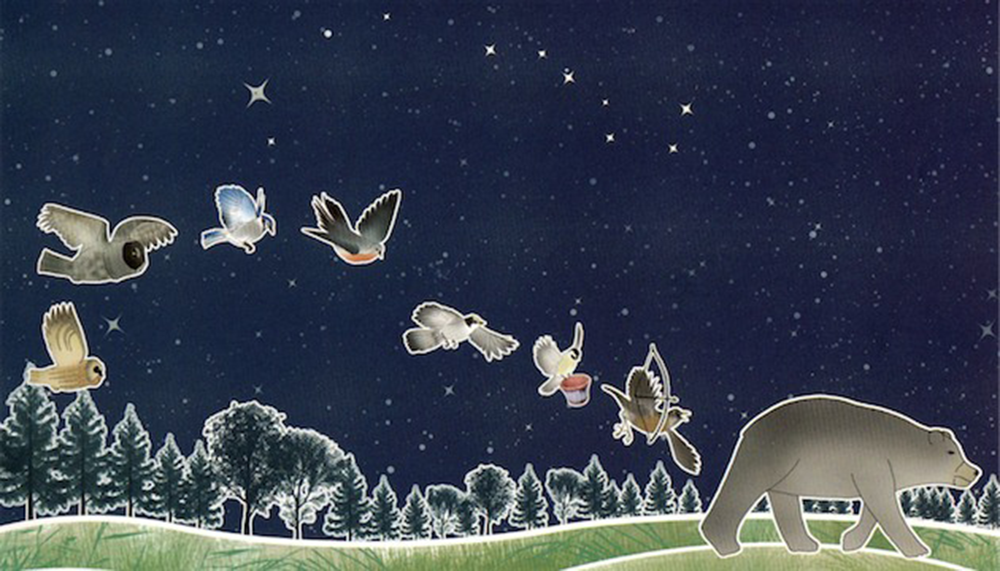On Feb. 13, Prof. Hilding Neilson from Memorial University gave a public talk titled “Space is Park of the Land: Indigenous knowledges, light and satellite pollution, and the future of space exploration.”
Through this presentation, Neilson addresses concerns about how light pollution, satellites and exclusion from decision-making tables have separated Indigenous Peoples from the night sky.
Indigenous Peoples and their knowledge have been mostly excluded from astronomy. Neilson asks listeners to consider: who has a right to the night sky?
Neilson is a Mi’kmaw interdisciplinary scientist whose research explores the intersection of science, astronomy and Indigenous knowledge. Hosted by the Ānako Indigenous Research Institute and the Faculty of Science, his talk was followed by a discussion with students from the Carleton University Physics Society.

Neilson featured images from a children’s book that tells the traditional Mi’kmaw story of Muin and the Seven Bird Hunters. (photo source)
Neilson says we are connected to the land, just as we are to the night sky, so our access to the night sky has an impact in the same way Indigenous communities are affected when they are displaced from their land.
Neilson talks of the power light pollution and satellites have in limiting our view of outer space. He asks listeners if treaty rights to land stop at a certain height limit. Through that lens, he says Indigenous people have a right to an unobstructed view of the night sky.
“Our view of the night sky is colonized,” says Neilson. “Our view of the constellations become colonized because when we teach students in the classroom, we’re teaching them about Orion, Ursa Major, Cassiopeia, all wonderful constellations, but they’re not Mi’kmaq constellations, Inuit constellations.”
Neilson says outer space is often considered a commons that everyone has a right to share, but it begs us to consider who has had access to the night sky and who is making decisions about it.
Indigenous Peoples have been charting the movements of stars and planets for generations, as seen in the Big Horn Mountain Medicine Wheel and the Sun Dagger.
Neilson encourages scientists to rethink the commonly accepted perspective that space is lifeless, and the moon is just a rock. He says astronomy must embrace Indigenous knowledge and methods as part of its future in space and astronomy.
“This view comes from the same idea as constellations as stick figures,” Neilson says.
To learn more about space as part of the land, listen to the full recording of Neilson’s Research Talk here:
Additional Resources
The following sources provide further related reading: